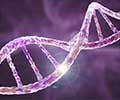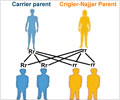University of Utah scientists have identified a genetic mutation linked to hereditary form of a rare neuroendocrine tumour called paraganglioma (PGL).
University of Utah scientists have identified a genetic mutation linked to hereditary form of a rare neuroendocrine tumor called paraganglioma (PGL).
Paragangliomas are rare, generally benign tumors that arise from cells called glomus cells, which are located along blood vessels and play a role in regulating blood pressure and blood flow.According to the researchers, the gene, called hSDH5, is required for activation of an enzyme complex that plays a critical role in the chemical reactions that take place within cells to convert biochemical energy into usable energy.
"Defects in mitochondria, the power sources of the cell, have been implicated in a variety of human disorders, including cancer," said Dr. Jared Rutter, associate professor of biochemistry at the University of Utah School of Medicine, investigator at the University's Huntsman Cancer Institute, and lead author of the study.
The researchers used yeast Saccharomyces cerevisiae, in order to study mitochondrial functions before going back to humans and determining whether what we learned in yeast was also relevant to humans.
They first characterized a mitochondrial protein called Sdh5 in yeast and then moved on to study its potential role in human disease.
Rutter and his colleagues discovered that, in yeast, the Sdh5 protein is needed for the SDH complex to function normally.
Advertisement
"Previous genetic studies have shown that the hereditary paragangliomas PGL1, PGL3, and PGL4 are associated with mutations causing loss of SDH activity. Although the gene for PGL2 had not been identified, we knew that it was located on the same chromosome as the hSDH5 gene," he added.
Advertisement
Of the 45 individuals within the affected lineage who inherited the mutation, 33 have developed PGL2, providing strong evidence that hSDH5 is the PGL2 gene.
The researchers suggest that identification of hSDH5 as the PGL2 gene has potential clinical implications for patients with familial PGL syndromes.
The study appears in journal Science.
Source-ANI
ARU














